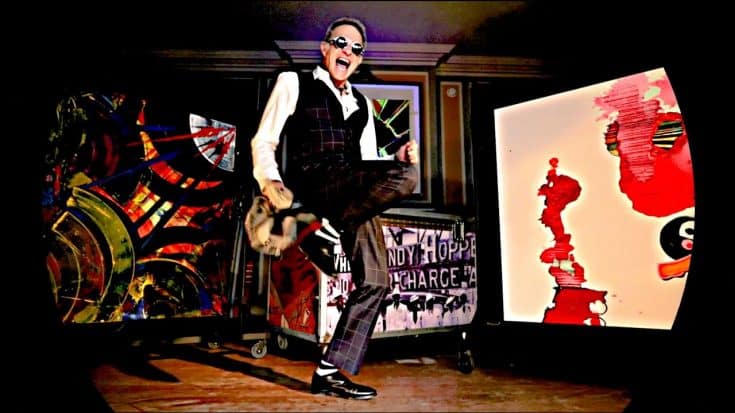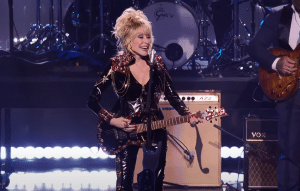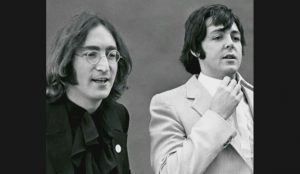We Find Out What Really Made David Lee Roth Leave Van Halen

via David Lee Roth /Youtube
Van Halen burst onto the music scene during the late 1970s, and the music industry was somewhat perplexed by their arrival. The disco genre was dominating, and punk bands had dismissed established rock acts like Led Zeppelin as outdated.
Nevertheless, the band’s exceptional talent and captivating stage presence propelled them to unprecedented levels of success. Eddie Van Halen revolutionized guitar playing with his distinctive tapping technique, while frontman David Lee Roth dazzled audiences with his energetic on-stage antics and ear-piercing vocal range.
However, a sudden shift occurred after about six or seven years, marked by internal conflicts and conflicting visions for the band’s direction. Roth parted ways with the group, embarking on a highly successful solo career.
The next thing you know, Roth’s time with the legendary band was over just like that. How did it happen? There are a few reasons, actually, and David’s discontent was something that slowly snowballed into the unfortunate departure from his band at the very height of their popularity.
Eddie Van Halen being a bit of a prick
When your band carries your own name, as is the case with Eddie Van Halen, it’s natural to desire influence over the musical direction and image of the group. This desire became increasingly apparent as their popularity soared.
David Lee Roth favored a more relaxed and enjoyable approach, while Eddie Van Halen aimed for greater musical diversity and depth. Although the two of them led one of the greatest rock bands, they had always butted heads for a long while now, much like many of the legends before them.
The breaking point in the strained relationship between Eddie and Roth occurred during the tour for their immensely successful 1984 album. Eddie’s knack for taking shots at former band members became evident once Roth departed, and the verbal sparring began.
When Eddie learned that Roth was involved in a movie project before leaving Van Halen, he publicly suggested that “Dave left to be a movie star” and audaciously inquired if Eddie would compose a score for him.
David Lee Roth and Eddie Van Halen, Van Halen, 1979 #RIPEddieVanHalen pic.twitter.com/zL7foacqmN
— Classic Rock In Pics (@crockpics) October 6, 2020
Van Halen only hired David for his speakers
Hell, even at the start of their relationship, Eddie actually didn’t favor Roth as a singer.
Despite Van Halen’s debut album being released in 1978, their origins go way back several years before that. When they were still called Mammoth, Eddie served as the lead vocalist, and bassist Michael Anthony had not yet become part of the lineup.
Interestingly, they rented their sound system from a singer in another local L.A.-based band, a flamboyant vocalist named David Lee Roth. This Roth guy had previously auditioned unsuccessfully to become Mammoth’s singer, but he continued renting out his PA equipment to them, reportedly for $50 per gig.
As fate would have it, Eddie Van Halen eventually grew weary of his role as lead singer and likely wished to concentrate on showcasing his exceptional guitar skills. Consequently, he reasoned that it would be more cost-effective to invite Roth to join the band, effectively securing both a talented vocalist and access to high-quality sound equipment.
VAN HALEN – David Lee Roth in 1979 … A Visual History: 1978 – 1984 by Neil Zlozower #vanhalen #metal #70s 🤘🎸🎶😎❤️ pic.twitter.com/aQRqVyzlau
— Doug S (@TheRockDude99) September 26, 2023
The vulgar photoshoot
Any fan who got ahold of some copies of Van Halen’s Women and Children First saw a racy surprise within the album sleeve. Alongside the vinyl is a poster featuring a shirtless David Lee Roth dressed in an adult-themed leather and chains outfit.
This was the kind of imagery that increasingly fueled the disagreements between Eddie and David. The photoshoot for the album cover only added to their mounting frustrations. David Lee Roth took charge of selecting the artist for Van Halen’s third LP album cover, eventually choosing Helmut Newton, a fashion photographer.
With Newton and his team ready to begin the shoot, they decided to commence even before the Van Halen brothers arrived. Recalling the situation, Warner Bros. art director Richard Seireeni remarked, “Helmut didn’t much like the other band members. So he took some of the other guys but ended up shooting all of these pictures of David”.
The following day, a dispute emerged between Roth and the Van Halen brothers regarding the outcome of the photoshoot. Roth was accused of attempting to dominate the album artwork. Eventually, Warner Bros. arranged another photoshoot, enlisting the services of rock photographer Norman Seeff to capture images of the band.
After negotiations, the group and Roth reached a compromise: Seeff’s photographs were used for the front and back covers, while Roth’s iconic chained photo taken by Newton was included as a poster with the first million vinyl pressings of the new album.
Early UK copies of Van Halen’s third album, “Women and Children First” came with this unassuming and modest poster of Diamond David Lee Roth https://t.co/XbNVAvX5hj pic.twitter.com/YR3ccRFqgI
— Steve Carr (@EveryRecord) July 30, 2022
Eddie’s dream studio became a source of conflict
In 1983, Eddie realized his dream of constructing a studio for the band, and with the assistance of producer Donn Landee, who had previously worked on the early Van Halen albums, he brought this vision to life.
This studio, named 5150, became the recording venue for every subsequent album by the band, including the 1984 release that catapulted them to superstardom. However, the circumstances surrounding the band during the creation of this album, coupled with the studio itself, played a significant role in David’s decision to depart from the group.
Roth was convinced that Eddie wielded an excessive amount of control over the creative process within the studio, which was, in part, why Eddie had built it in the first place. Eddie had grown dissatisfied with how their previous producer, Ted Templeman, approached making records.
Eddie no longer wanted the band to be associated with singles or other artists’ hits, as had been the case with their earlier albums. Although Templeman continued to contribute to the making of 1984, it was evident that he was now operating within Eddie’s domain, both figuratively and almost literally.
Classic photo of Eddie Van Halen in his personally-owned 5150 studio FULL of vintage Universal Audio gear. #tbt pic.twitter.com/Ah3Ab0uTXd
— Universal Audio (@UAudio) August 21, 2014
Their biggest hit was David’s last
The peak of Van Halen’s fame came with the release of 1984, in the same year. However, this album also marked the tipping point in the deteriorating relationship between Roth and Eddie Van Halen.
The album’s lead single, “Jump”, achieved massive success, affirming Eddie’s growing influence in shaping the direction of Van Halen’s music production. Recognizing Eddie’s prowess in this aspect, Roth chose to focus his efforts on the band’s music videos.
The video’s producer, Robert Lombard, aimed to create a video that emphasized group unity and live performance, a style that would be emulated by other bands for years to come. Lombard quickly became aware of the drama surrounding Roth, as the singer sought to dominate the shots, often appearing with his hot rod or scantily clad girls.
When Lombard raised concerns about Roth’s seemingly self-centered approach, he was fired from the project. Although he received compensation for his work, the video ultimately showcased the band performing together as a cohesive unit. “Jump” received one of the earliest music video awards on MTV, though Lombard did not receive credit for his contribution.
David went solo and was actually good at it
1984 might have set the stage for their dominant presence throughout the year, but, before the calendar turned to 1985, David pleasantly surprised fans with an early holiday gift.
The charismatic vocalist unveiled his first solo single, a rendition of the Beach Boys classic “California Girls”, accompanied by a playful music video that wonderfully showcased his personality.
As it would soon become evident, this was just the beginning of a broader project known as the Crazy From the Heat covers EP, in which Roth tackled other tracks, including the Louis Prima medley “Just a Gigolo / I Ain’t Got Nobody”.
The music video for “California Girls” also heightened Roth’s over-the-top persona as the host of a show reminiscent of MTV, cleverly named Dave TV, where he made comical appearances during several popular MTV video shoots.
The EP achieved considerable success, reaching No. 15 on the Billboard 200 chart, while its tracks, including “California Girls”, “Just a Gigolo / I Ain’t Got Nobody”, and “Easy Street,” received significant airplay on radio stations. Subsequently, the EP earned platinum certification in the United States.
David’s ill-fated attempt at becoming a movie star
After the success of his debut solo EP, the flamboyant singer had ambitions beyond music; he aspired to venture into the world of acting. Judging by his captivating music videos from that period, it seemed he might have had the potential to succeed in this new endeavor.
Roth had even conceived a movie project—a semi-autobiographical story centered around a rock star named Dave (no prizes for guessing who that was) embarking on a series of wild escapades with his manager on the shores of Dongo Island.
Roth had initially considered involving Eddie Van Halen to create the movie’s soundtrack (which pissed off the guitarist), but this plan fell through after the band officially disbanded in the summer of 1985. Nonetheless, storyboards were developed, and a cast was assembled to kickstart production.
Unfortunately, CBS, the studio with which Roth had a movie deal, underwent significant changes and canceled several upcoming film projects, including Roth’s passion project. In response, Roth filed a lawsuit against CBS and secured a settlement, but regrettably, the movie never saw the light of day.
David Lee Roth, 1985.
© Mark Weiss. pic.twitter.com/1gEbnxHBL2
— Heavypédia (@Heavypedia) January 23, 2021
Going separate ways
After parting ways, both sides swiftly moved forward. The announcement of their split came in August 1985, and by September, Eddie Van Halen made a notable appearance at Farm Aid alongside Sammy Hagar, signaling the beginning of the next chapter for Van Halen.
The band wasted no time and soon embarked on the recording of their highly successful 1986 album, 5150, which saw its release in March 1986. This album produced hit singles such as “Why Can’t This Be Love”, “Dreams”, and “Best of Both Worlds.”
Meanwhile, for Roth, despite the movie project falling through, he remained focused on creating new music with his solo band. Eat ‘Em and Smile, featuring Steve Vai on guitar, Billy Sheehan on bass, and Gregg Bissonette on drums, hit the music scene in July 1986 and achieved major success with tracks like “Yankee Rose” and “Goin’ Crazy”.
Nothing lasts forever
With time, some wounds would eventually heal. Following a falling out with Sammy Hagar, Van Halen briefly reunited with Roth in 1996, recording two new songs for their greatest hits collection.
However, the band once again clashed with Roth, ultimately choosing Gary Cherone of Extreme as their new vocalist. After a one-off reunion tour with Hagar, Van Halen returned to Roth in 2006, and by 2007, a reunion was confirmed, with Roth back in the fold and Wolfgang Van Halen taking over bass duties from Michael Anthony.
This quartet went on to release the band’s final studio album, A Different Kind of Truth, in 2012. The group continued to tour until 2015, but Eddie Van Halen’s health issues emerged, and sadly, he passed away on October 6, 2020, marking the end of the band’s storied career.
On this day in 2015, Van Halen started what would be their final concert tour. @eddievanhalen @DavidLeeRoth pic.twitter.com/6X568fTztB
— Barry Butler Photography (@barrybutler9) July 5, 2023














